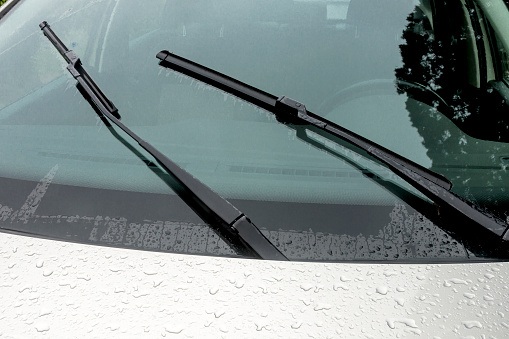Essential Guide to Bus Wiper Arm Installation
Ensure clear visibility and safety with the right bus wiper arm. Learn their importance, installation, and maintenance for optimal bus windshield wipers.
LEILI
Hower Yang
8/16/20253 min read


Understanding the Importance of Bus Wiper Arms
# Understanding the Importance of Bus Wiper Arms
In the world of vehicle maintenance, bus wiper arms might not get the attention they deserve. However, these components play a crucial role in ensuring clear visibility and safety on the road. This article delves into why bus wiper arms are essential, how they function, and what to consider during their installation.
The Role of Bus Windshield Wipers
Bus windshield wipers are indispensable for maintaining visibility in adverse weather conditions. Whether it's rain, snow, or sleet, these wipers work tirelessly to keep the windshield clear. However, the effectiveness of these wipers largely depends on the bus wiper arms.
What Are Bus Wiper Arms?
Bus wiper arms are the mechanical components that connect the wiper blades to the bus's wiper motor. They are responsible for the movement of the wiper blades across the windshield. Without the wiper arms, the blades would not have the necessary support and range of motion to clear the windshield effectively.
Functionality of Wiper Arms
The primary function of a wiper arm is to apply the right amount of pressure on the wiper blade to ensure it makes full contact with the windshield. This contact is essential for clearing away water and debris efficiently. The arm's design and materials also play a part in the longevity and effectiveness of the wiper system.
Importance of Proper Wiper Arm Installation
The installation of bus wiper arms is just as critical as their function. Proper installation ensures that the wipers operate smoothly and without any hitches. Incorrect installation can lead to inefficient wiping, increased wear on the blades, or even damage to the windshield.
Steps to Install Bus Wiper Arms
Select the Right Wiper Arm: Not all wiper arms are the same. Ensure that the arm matches the specifications for the bus model in question.
Remove the Old Arm: Carefully remove the existing wiper arm. This typically involves loosening a nut or bolt that holds the arm in place.
Position the New Arm: Align the new arm on the wiper motor spindle. Make sure it's positioned correctly to ensure even pressure distribution across the windshield.
Secure the Arm: Tighten the nut or bolt to hold the arm in place. It’s crucial to ensure that it’s neither too tight nor too loose.
Test the Wipers: After installation, test the wipers to ensure they move smoothly and cover the entire windshield area.
Common Mistakes During Installation
Over-tightening the Arm: This can lead to restricted movement or damage to the wiper motor.
Incorrect Alignment: Misalignment can cause uneven wiping and leave parts of the windshield unclear.
Ignoring Manufacturer Specifications: Always refer to the vehicle’s manual for guidance on installation.
Maintenance and Care for Bus Wiper Arms
Regular maintenance of bus wiper arms is essential to ensure they function correctly and last longer. Proper care can prevent costly repairs and replacements.
Routine Checks
Perform regular inspections to identify any signs of wear or damage. Check for:
Rust or Corrosion: These can weaken the arm and affect its functionality.
Physical Damage: Bent or cracked arms need immediate attention.
Loose Connections: Ensure all nuts and bolts are tight and secure.
Cleaning Tips
Use a Soft Cloth: Wipe the wiper arms with a soft cloth to remove dirt and debris.
Avoid Harsh Chemicals: Use mild soapy water to clean the arms, as harsh chemicals can cause corrosion.
Upgrading Bus Wiper Arms
As technology advances, so do the components used in buses. Upgrading bus wiper arms can lead to better performance and increased safety.
Benefits of Upgrading
Enhanced Durability: Modern wiper arms often use materials that resist corrosion and wear better.
Improved Performance: Newer designs may offer better pressure distribution and wiping efficiency.
Cost-Effectiveness: While the initial cost may be higher, upgraded arms can reduce long-term maintenance expenses.
Choosing the Right Upgrade
Compatibility: Ensure the new arms are compatible with your bus model.
Quality: Opt for reputable brands known for durability and performance.
Installation Support: Consider upgrades that offer easy installation or professional support.
